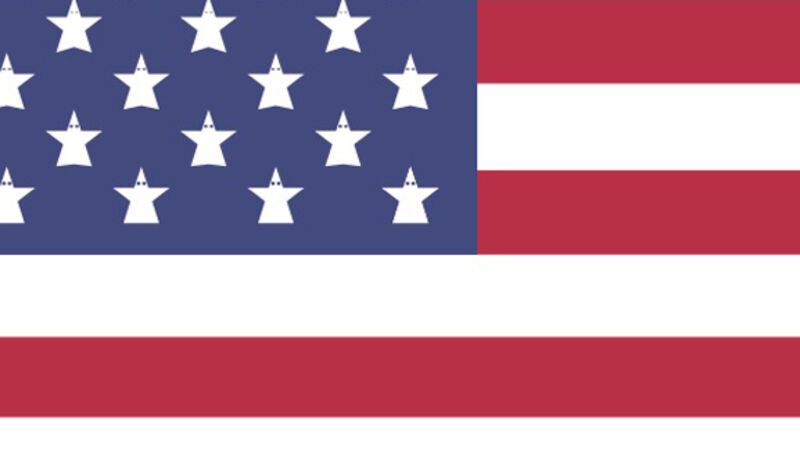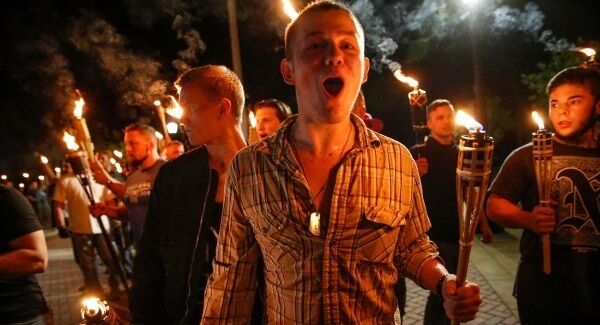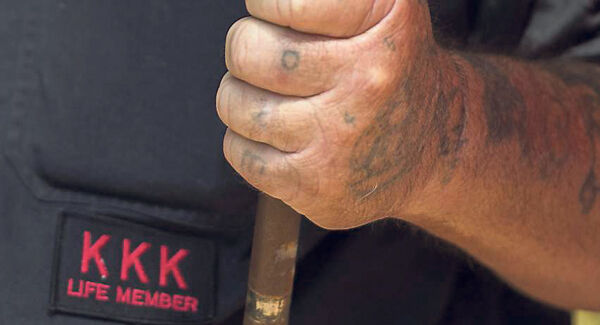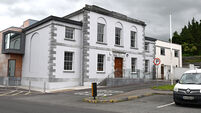Rage of the Right: How Charlottesville has come to define the Presidency of Donald Trump

Long before President Donald Trump came on the scene, the US was riven by the wounds of racism.
A decade ago, when Barack Obama became their first black president, Americans believed their better angels had prevailed. But no longer.
Today, racism is overt again in America, it’s on the rise and it looks particularly lethal. Its adherents, many of whom now march heavily armed, have come out from the shadows of the internet, emboldened by the knowledge that more often than not, the leader of their country is looking the other way.
And, as these white supremacists wave Nazi flags and chant hatred on the streets, more and more Americans are wondering what is happening to their country and to the racial progress.
They thought other generations had won — or contained — this battle. Instead, in 2017, they are facing questions from their children that are frightening.
People like Peter Beinart. When his nine-year-old daughter saw footage of the August 12 rally in Charlottesville, Virginia, and heard chants of “Jews will not replace us” and other slogans, “she asked me if there would be a second Holocaust”, tweeted Beinart, a former editor of the New Republic.
White supremacy in the US has many strands and anti-Semitism is undoubtedly one.
“In Charlottesville, that long trail emerged once again into plain view not only for America, but for the whole world to see,” said former Democratic vice-president Joe Biden.
“The crazed, angry faces illuminated by torches. The chants echoing the same anti-Semitic bile heard across Europe in the 1930s.”

A number of Republicans were also alarmed at the violence that saw one person killed at the biggest white supremacist rally in a decade, drawing some 500 supremacists and 1,000 counter protesters.
They were also quick to criticise Trump’s decision after the rally to draw equivalencies between the white supremacists and counter protesters.
They are aware that this is not about Democrats and Republicans and that Biden was not exaggerating when he said it is about a battle for the future of America.
“If it wasn’t clear before, it’s clear now: We are living through a battle for the soul of this nation,” declared Biden.
“The giant forward steps we have taken in recent years on civil liberties and civil rights and human rights are being met by a ferocious pushback from the oldest and darkest forces in America.”
It would be wrong to blame Trump for the racism that’s always been simmering beneath the surface in America.
But he can be blamed for failing to forcefully condemn it and for sowing the seeds of intolerance during his campaign for the presidency when he demonised immigrants and other vulnerable groups.
It would be wrong, too, to say racism is now worse in America than it ever was.
It is becoming more overt. But worse? No. To suggest that is to be oblivious to the extent of the cruelty of historical racism that once permeated every aspect of American life.
To remind people of this, there is a project under way to erect memorial markers to the lynchings of nearly 4,000 African-Americans in 12 southern states from 1877 to 1950.
But violence like that at Charlottesville can quickly escalate if it’s not “unequivocally and unconditionally condemned”, warned a UN report on August 18, six days after the rally.
The statement by the UN Committee on the Elimination of Racial Discrimination stopped short of criticising Trump by name but its message was clear.
The UN body said it was “disturbed by the failure at the highest political level” of the US to reject racist demonstrations.
“We are alarmed by the racist demonstrations, with overtly racist slogans, chants, and salutes by white nationalists, neo-Nazis, and the Ku Klux Klan, promoting white supremacy and inciting racial discrimination and hatred,” said Anastasia Crickley, chair of the UN body.

“The biggest lesson out of Charlottesville is that Nazi sympathisers, who a year ago hid behind internet anonymity, are now ready to emerge, be identified, and even physically engage,” reporter Ron Kampeas told me after covering the rally.
“They feel Trump has empowered them. Even if they weren’t saying this out loud — and they are — it would be evident in the proliferation of ‘Make America Great Again’ hats [Trump’s election slogan] on those I saw marching next to Nazi and Confederate flags.”
The Anti-Defamation League, which tracks hate crimes, explains the link this way: “White supremacist ideology in the United States today is dominated by the belief that whites are doomed to extinction by a rising tide of non-whites who are controlled and manipulated by the Jews — unless action is taken now.”
It says anti-Semitic incidents surged by 34% in 2016 compared with the previous year.
In the first quarter of 2017, the number jumped 86% compared with the same period in 2016.
Then again, the supremacist bigotry of the Ku Klux Klan was always imbued with hatred of other religious groups, including Catholics.
I was surprised to encounter it, however, as recently as the late 1990s when I’d arranged to interview a KKK grand wizard, or leader, in Atlanta.
When he detected on the phone that I was Irish “and probably Catholic”, he refused to speak to me.
Such bigotry is certainly not unique to America. Yet racism has defined much of America’s history. It is a country that was built on the barbarity of slavery.
Before the 1861-65 Civil War, partly fought to end slavery, eight presidents had owned slaves and slavery underpinned the economy of the southern confederate states.
But while the war formally ended 250 years of slavery, another kind of cruelty was already getting under way. It was racial segregation and it would keep African-Americans in a state of apartheid for most of the next 100 years, supported by Democrats and Republicans, until the civil rights marches of the 1960s forced an end to the practice.
The civil rights era also changed the dynamics of US politics.
The Democratic party had a lock on the southern states from the 1870s to the 1960s. But when Democratic leaders began to side with the civil rights movement, the south began to move into the Republican camp, a change that continued in the following decades.
Meantime, as those who had put their lives on the line were baton-charged at civil rights marches, two presidents, at different periods, also made a stand for equality — slowly, at first, in the case of John F Kennedy, but forcefully in the case of his successor, Lyndon Johnson, who pioneered the 1965 Voting Rights Act.
Republican presidents, too, encouraged reconciliation. In 1982, president Ronald Reagan visited an African-American couple to make clear that a cross-burning outside their home by a KKK member was “not something that should have ever happened in America”.
Racial progress needs leaders to nurture it. Yet previous Democratic and Republican administrations failed African-Americans by doing little to bring hope and jobs and schools to blighted urban neighbourhoods.
Indeed, another aspect of the growing divide in modern America was also evident at Charlottesville with the presence of members of the Black Lives Matter and Antifa movements.
The Black Lives Matter movement, formed about five years ago to affirm “the validity of black life”, oppose white supremacist groups, and highlight what it sees as bias in the criminal justice system and “police brutality”.
The Antifa, short for anti-fascist, is a newer, far-left, sometime militant group, which includes anarchists.
Its main goal is to try to deny white supremacists a public forum by, if necessary, confronting them at rallies like the one at Charlottesville.
New York writer Sean McElwee says the US still has deep structural racial issues.
“These racial disparities are perpetuated not only through explicit discrimination, but through the power of history,” he says.
“For instance, black and Latino children are far more likely to grow up in poor neighbourhoods, stinting upward mobility.”
Another problem is that black people and white people see the issue of racism through different lenses.
“Black people are all too aware that progress on racial issues has hardly moved forward at all, while white people are nearly as blind to their racism as ever,” says Jim Grimsley, author of How I Shed My Skin: Unlearning the Racist Lessons of a Southern Childhood.
Most white Americans were horrified by the Charlottesville violence. But black Americans were less surprised. They remembered vividly that just two years ago nine black people were gunned down by white supremacist Dylann Roof in a black church in Charleston, South Carolina.
They remembered, too, the relentless questioning over the authenticity of Obama’s birth certificate, a concocted “controversy” led at the time by Trump.
To many African-Americans, this was about humiliating an uppity black man, the old racist tactics dressed up in modern attire.
It is not the case that a majority of Americans are racist and it probably never was the case. White supremacists are certainly coming out into the open and feeling emboldened but they remain a small minority.
When about 100 marched in Boston a week after Charlottesville, they were outnumbered by counter protesters in their thousands.
What is most troubling in America in 2017 is not so much that racism still exists but that the country lacks a Kennedy or a Johnson or a Reagan who will unequivocally reject it.
Sooner or later, every American president faces a moment that defines their presidency when the country looks to them for personal courage. That moment came and went for Donald Trump after Charlottesville.
Over a number of generations, slow but steady progress was being made. That is now in peril. Of course the country will not return to the vile chapters of its past but neither is its leader committed to healing racial divisions.
But it should also be pointed out that Americans seem to be on the side of diversity and tolerance.
A survey last month by the Pew Research Center found that for a majority, the country’s openness to people from around the world “is essential to who we are as a nation”.
A total of 68% say openness to foreigners is a defining characteristic of the nation.
Their president has never really defined what making America great means.
So perhaps Americans themselves will be the ones to define it for him and, as always, they will be the ones to make it great.















